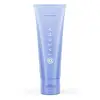What's inside
What's inside
 Key Ingredients
Key Ingredients

 Benefits
Benefits

 Concerns
Concerns

 Ingredients Side-by-side
Ingredients Side-by-side

Water
Skin ConditioningMicrocrystalline Cellulose
AbsorbentPropanediol
SolventSodium Cocoyl Glutamate
CleansingGlycerin
HumectantAcrylates Copolymer
Sodium Caproyl Methyltaurate
CleansingCoco-Betaine
CleansingParfum
MaskingCamellia Sinensis Leaf
PerfumingOryza Sativa Powder
Chondrus Crispus Extract
Skin ConditioningSodium Hyaluronate
HumectantBetaphycus Gelatinum Extract
BleachingLauryl Glucoside
CleansingPotassium Hydroxide
BufferingPolyquaternium-39
Disodium EDTA
Phenoxyethanol
PreservativeEthylhexylglycerin
Skin ConditioningSodium Benzoate
MaskingSodium Carbonate
BufferingAlcohol
AntimicrobialWater, Microcrystalline Cellulose, Propanediol, Sodium Cocoyl Glutamate, Glycerin, Acrylates Copolymer, Sodium Caproyl Methyltaurate, Coco-Betaine, Parfum, Camellia Sinensis Leaf, Oryza Sativa Powder, Chondrus Crispus Extract, Sodium Hyaluronate, Betaphycus Gelatinum Extract, Lauryl Glucoside, Potassium Hydroxide, Polyquaternium-39, Disodium EDTA, Phenoxyethanol, Ethylhexylglycerin, Sodium Benzoate, Sodium Carbonate, Alcohol
Water
Skin ConditioningGlycerin
HumectantSodium Cocoyl Isethionate
CleansingCocamidopropyl Betaine
CleansingHydrogenated Castor Oil
EmollientNiacinamide
SmoothingAcrylates Crosspolymer-4
Emulsion StabilisingCoco-Glucoside
CleansingDisodium Cocoyl Glutamate
CleansingXanthan Gum
EmulsifyingSaccharomyces/Rice Ferment Filtrate
Skin ConditioningCocos Nucifera Fruit Extract
EmollientLactobacillus/Pumpkin Fruit Ferment Filtrate
Skin ConditioningPunica Granatum Extract
AstringentAloe Barbadensis Leaf Juice
Skin ConditioningSodium Hyaluronate
HumectantGlyceryl Laurate
EmollientGlyceryl Undecylenate
EmollientPanthenol
Skin ConditioningPyrus Malus Fruit Extract
Skin ConditioningSqualane
EmollientHydroxyethylcellulose
Emulsion StabilisingChlorella Vulgaris Extract
Skin ConditioningCamellia Oleifera Leaf Extract
AstringentCaprylyl Glycol
EmollientJojoba Esters
EmollientOryza Sativa Germ Powder
AbrasiveLactic Acid
BufferingButylene Glycol
HumectantPentylene Glycol
Skin ConditioningSodium Chloride
MaskingPropanediol
SolventPhenoxyethanol
PreservativeCitric Acid
BufferingLeuconostoc/Radish Root Ferment Filtrate
AntimicrobialTocopherol
AntioxidantEthylhexylglycerin
Skin ConditioningWater, Glycerin, Sodium Cocoyl Isethionate, Cocamidopropyl Betaine, Hydrogenated Castor Oil, Niacinamide, Acrylates Crosspolymer-4, Coco-Glucoside, Disodium Cocoyl Glutamate, Xanthan Gum, Saccharomyces/Rice Ferment Filtrate, Cocos Nucifera Fruit Extract, Lactobacillus/Pumpkin Fruit Ferment Filtrate, Punica Granatum Extract, Aloe Barbadensis Leaf Juice, Sodium Hyaluronate, Glyceryl Laurate, Glyceryl Undecylenate, Panthenol, Pyrus Malus Fruit Extract, Squalane, Hydroxyethylcellulose, Chlorella Vulgaris Extract, Camellia Oleifera Leaf Extract, Caprylyl Glycol, Jojoba Esters, Oryza Sativa Germ Powder, Lactic Acid, Butylene Glycol, Pentylene Glycol, Sodium Chloride, Propanediol, Phenoxyethanol, Citric Acid, Leuconostoc/Radish Root Ferment Filtrate, Tocopherol, Ethylhexylglycerin
 Reviews
Reviews

Ingredients Explained
These ingredients are found in both products.
Ingredients higher up in an ingredient list are typically present in a larger amount.
Ethylhexylglycerin (we can't pronounce this either) is commonly used as a preservative and skin softener. It is derived from glyceryl.
You might see Ethylhexylglycerin often paired with other preservatives such as phenoxyethanol. Ethylhexylglycerin has been found to increase the effectiveness of these other preservatives.
Glycerin is already naturally found in your skin. It helps moisturize and protect your skin.
A study from 2016 found glycerin to be more effective as a humectant than AHAs and hyaluronic acid.
As a humectant, it helps the skin stay hydrated by pulling moisture to your skin. The low molecular weight of glycerin allows it to pull moisture into the deeper layers of your skin.
Hydrated skin improves your skin barrier; Your skin barrier helps protect against irritants and bacteria.
Glycerin has also been found to have antimicrobial and antiviral properties. Due to these properties, glycerin is often used in wound and burn treatments.
In cosmetics, glycerin is usually derived from plants such as soybean or palm. However, it can also be sourced from animals, such as tallow or animal fat.
This ingredient is organic, colorless, odorless, and non-toxic.
Glycerin is the name for this ingredient in American English. British English uses Glycerol/Glycerine.
Learn more about GlycerinPhenoxyethanol is a preservative that has germicide, antimicrobial, and aromatic properties. Studies show that phenoxyethanol can prevent microbial growth. By itself, it has a scent that is similar to that of a rose.
It's often used in formulations along with Caprylyl Glycol to preserve the shelf life of products.
Propanediol is an all-star ingredient. It softens, hydrates, and smooths the skin.
It’s often used to:
Propanediol is not likely to cause sensitivity and considered safe to use. It is derived from corn or petroleum with a clear color and no scent.
Learn more about PropanediolSodium Hyaluronate is hyaluronic acid's salt form. It is commonly derived from the sodium salt of hyaluronic acid.
Like hyaluronic acid, it is great at holding water and acts as a humectant. This makes it a great skin hydrating ingredient.
Sodium Hyaluronate is naturally occurring in our bodies and is mostly found in eye fluid and joints.
These are some other common types of Hyaluronic Acid:
Learn more about Sodium HyaluronateWater. It's the most common cosmetic ingredient of all. You'll usually see it at the top of ingredient lists, meaning that it makes up the largest part of the product.
So why is it so popular? Water most often acts as a solvent - this means that it helps dissolve other ingredients into the formulation.
You'll also recognize water as that liquid we all need to stay alive. If you see this, drink a glass of water. Stay hydrated!
Learn more about Water